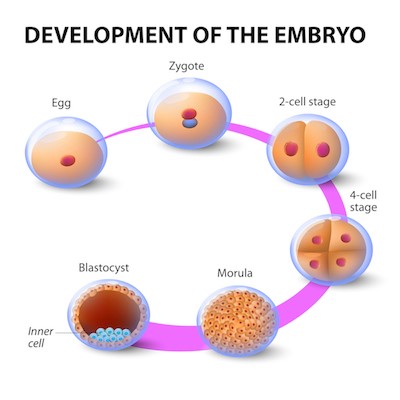Menu
Preimplantation genetic screening (PGS) is a reproductive technology used with an IVF cycle to increase the potential for a successful pregnancy and delivery. It is a genetic test on cells removed from embryos, allowing to select the healthy euploid embryo(s).
After embryos are created in the laboratory, they are grown for five to six days. On day five and again on day six, the biopsy for PGS is done on all blastocysts. Biopsy involves removing a few cells from the trophectoderm, or the layer of cells that is “hatching out” of the embryo at this stage of development. The embryos are stored while the genetic material from the removed cells is tested for abnormalities in a genetic lab.

Yes. Data from from thousands of live births in humans indicate that PGS does not lead to an increase in birth defects over that of the general population. In embryos where chromosomal microarray testing is performed, one can expect fewer pregnancies with chromosomal disorders since most chromosomal disorders are identified prior to transfer of the embryos to the uterus. Removal of a few of the cells of the early embryo does not alter the ability of that embryo to develop into a complete, normal pregnancy.
Embryos that have both a normal test result and appearance (morphology) can be transferred in a cryoembryo transfer (CET) cycle. While embryo morphology is helpful in selecting the best embryos for transfer, it is known that many embryos with significant chromosome abnormalities may have normal morphology. Therefore, PGS results help to better identify those embryos that can be safely transferred to the uterus. The combination of normal genetic testing with normal physical appearance indicates the highest chance of achieving a healthy pregnancy. All decisions regarding which embryo(s) to transfer to the uterus and how to use the remaining embryos are made together between the couple and our medical team.
In our Clinic we perform the PGS (Preimplantation Genetic Screening) of 24 chromosomes, testing for aneuploidies. We also perform PGD for monogenic diseases.
Here we have listed a few examples of aneuploidies (and the corresponding genetic disorder) of certain chromosomes that can be prevented by using PGS:
Yes. Even if the PGS test was not designed to perform the selection of the sex of the future baby, it will give us useful information including the sex of every single embryo created during the IVF cycle. It is therefore possible to determine beforehand which embryos will be implanted. The selection can be done together with the Intended Parents.